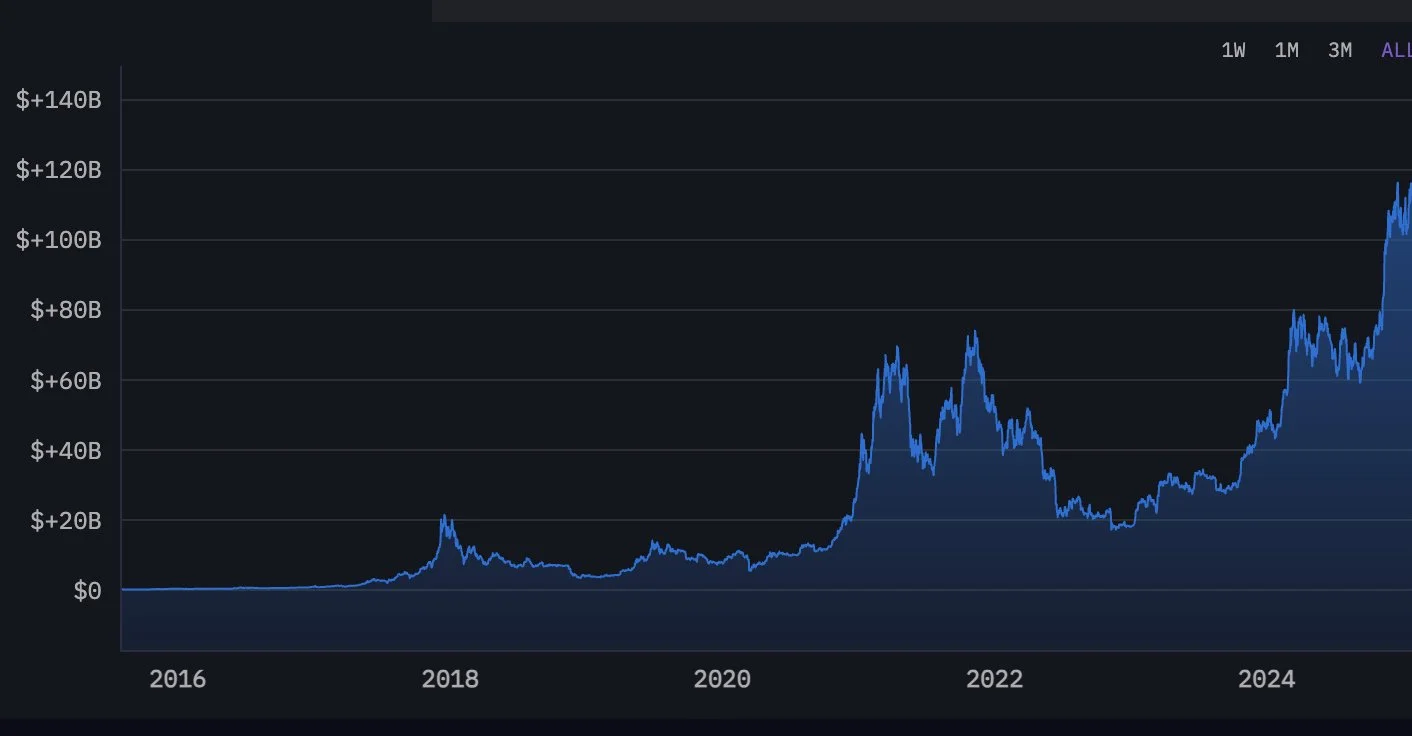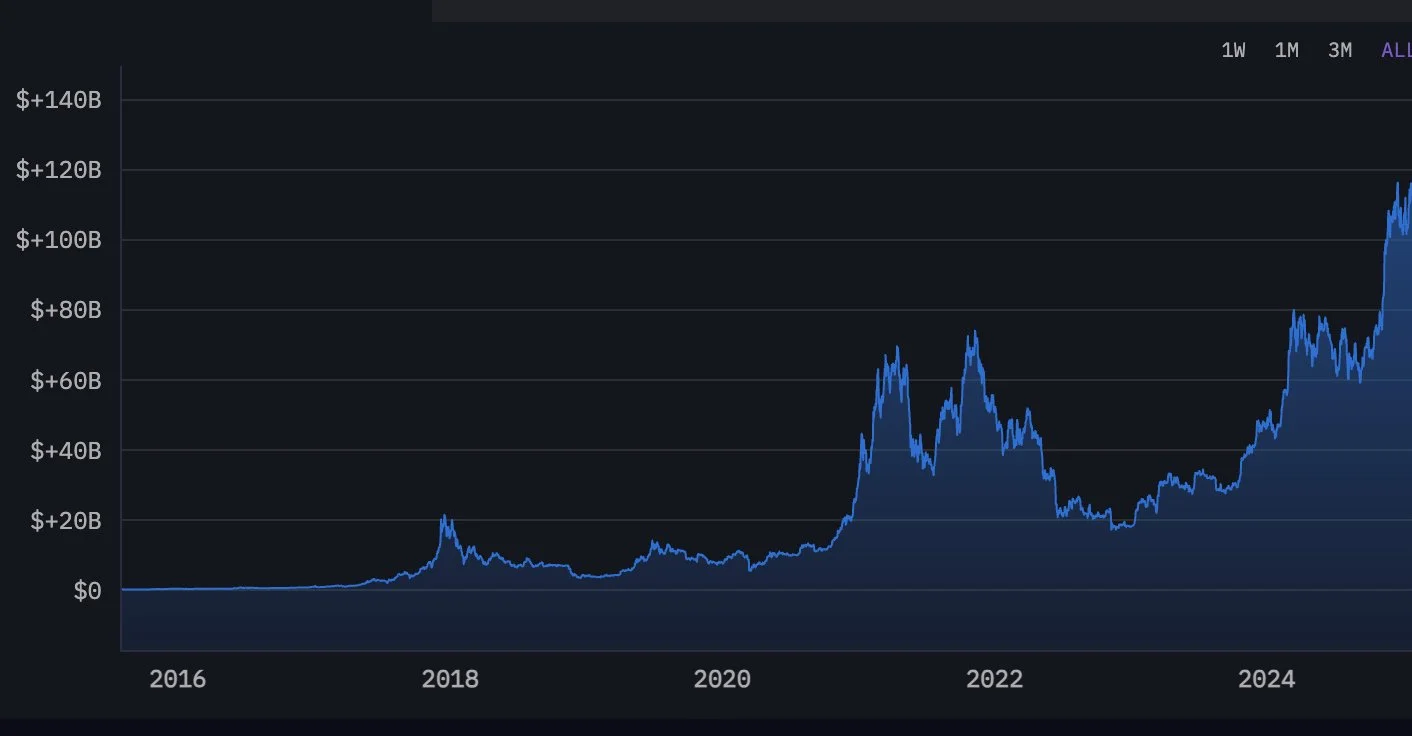
Satoshi Nakamoto, the enigmatic creator or group of creators behind the Bitcoin blockchain network, is wealthier than Microsoft co-founder Bill Gates. This was reported by Conor Grogan, Director of Product Strategy and Business Operations at the Coinbase exchange. According to his estimates, the total assets in wallets linked to Nakamoto exceed 1.096 million BTC. At the current price of 108 billion. This surpasses Gates’ $106 billion, who currently ranks 16th on Forbes’ list of the world’s wealthiest individuals.
Additionally, Grogan believes the Kraken exchange may hold data that could help uncover Satoshi’s identity. Nakamoto likely last interacted with the centralized exchange Cavirtex in 2014. In 2016, the platform was acquired by Kraken, which had already begun implementing user KYC verification by that time.

However, there is no confirmation that Cavirtex required KYC data prior to Kraken’s acquisition. Thus, it remains unknown whether identity information about Satoshi Nakamoto is stored in the exchange’s database.
Despite numerous attempts to uncover Satoshi Nakamoto’s identity, his true persona remains a mystery. Last year, director Cullen Hoback speculated in the HBO documentary “Electric Money: The Bitcoin Mystery” that Canadian developer Peter Todd could be Nakamoto, though Todd denied these claims.
Bitcoin’s price surge has also impacted the fortunes of other major cryptocurrency holders. Notably, the number of crypto millionaires doubled in 2024, reaching 172,300 individuals as of July 1. Among prominent large BTC holders are the Winklevoss twins, Barry Silbert, Michael Saylor, and Changpeng (CZ) Zhao.
Intriguing Facts About Satoshi Nakamoto
The Disappearance Act: Satoshi Nakamoto vanished from public view in 2011, shortly after handing over Bitcoin’s code repository and network alert keys to developer Gavin Andresen. No verified communication from Nakamoto has occurred since, fueling endless speculation.
A Name with Meaning: “Satoshi Nakamoto” is widely believed to be a pseudonym. The name roughly translates to “central intelligence” or “wise ancestor” in Japanese (satoshi = clear-thinking/wise, naka = inside/medium, moto = origin). Some theorize it could also hint at a collective effort by tech giants like Samsung, Toshiba, Nakamichi, and Motorola (Sa-Toshi Naka-Moto).
The First Transaction: On January 12, 2009, Nakamoto sent 10 BTC to late computer scientist Hal Finney in the first-ever Bitcoin transaction. Finney, an early cryptography pioneer, ran Bitcoin’s software the same day Nakamoto mined the “Genesis Block.”
The Genesis Block Message: Embedded in Bitcoin’s first block (mined January 3, 2009) is the text: “The Times 03/Jan/2009 Chancellor on brink of second bailout for banks.” This referenced a London Times headline, interpreted as a critique of centralized financial systems.
Satoshi’s Estimated Holdings: Nakamoto is thought to have mined between 600,000 to 1.1 million BTC in Bitcoin’s early days. These coins have never moved, sparking debates over whether Satoshi is inactive, lost access, or adheres to a principle of non-interference.
The Craig Wright Controversy: In 2016, Australian computer scientist Craig Wright claimed to be Satoshi, but failed to provide cryptographic proof. The crypto community widely dismisses his claims, dubbing him “Faketoshi.”
A Meticulous Coder: Satoshi’s code and whitepaper are praised for their clarity and foresight. Notably, the 2008 Bitcoin whitepaper warned about scalability challenges, anticipating debates that dominate the blockchain space today.
Possible Collective Effort: Linguistic analysis of Satoshi’s writings suggests fluctuations in British and American English usage. Some speculate Nakamoto could be a group, including figures like Nick Szabo (creator of Bit Gold) or Adam Back (inventor of Hashcash).
A Legacy Beyond Wealth: Satoshi’s creation revolutionized finance, but the inventor(s) never monetized Bitcoin’s fame. If alive, Nakamoto could be history’s most impactful anonymous figure since the inventor of the printing press.
Birthday of Bitcoin: October 31, 2008, marks the publication of the Bitcoin whitepaper, titled “Bitcoin: A Peer-to-Peer Electronic Cash System.” The date, coinciding with Halloween, adds a layer of mythic intrigue.
The Satoshi Unit: Bitcoin’s smallest unit (0.00000001 BTC) is called a “satoshi” in Nakamoto’s honor. It reflects Bitcoin’s divisibility and democratized design.
Satoshi Nakamoto’s anonymity remains one of the modern era’s greatest puzzles. Whether an individual, a team, or a symbolic entity, their legacy as the architect of decentralized finance is unparalleled. As Bitcoin evolves, the mystery of its creator only deepens its mythos in the digital age.

